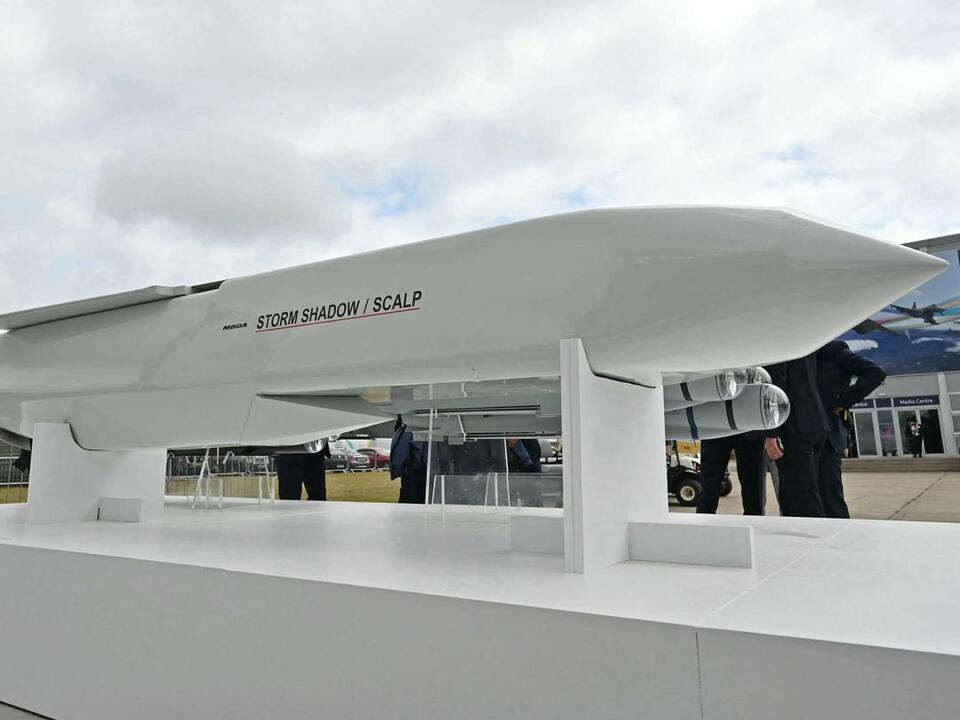Physical Address
304 North Cardinal St.
Dorchester Center, MA 02124
Physical Address
304 North Cardinal St.
Dorchester Center, MA 02124

JUSTIN TALLIS/ Getty Images
As Ukraine seeks to escalate its military strategies against Russia, its allies in the West are grappling with how far support should extend. Presently, Ukraine is restricted from using Western weapons for deep strikes within Russian territory, despite persistent appeals from President Volodymyr Zelenskyy.
While the US and Germany remain cautious about altering these restrictions due to fears of retaliation from Russian President Vladimir Putin, both the UK and France are pushing for a shift in policy.
Reports from The Telegraph and the Financial Times indicate that the UK has privately urged the US to permit Ukraine to employ its Storm Shadow missiles—known in France as SCALP—against targets within Russia.
According to the Financial Times, well-placed sources revealed that the UK government made a request to Washington and Paris earlier this summer, advocating for the use of British Storm Shadows in strikes against Russian targets. However, the utilization of this missile by Ukraine may hinge on US capabilities, potentially complicating unilateral decisions by the UK.
French President Emmanuel Macron has also endorsed the idea of permitting Ukraine to target Russian military infrastructure with Western armaments. He emphasized the necessity to enable Ukraine to neutralize sites from which missiles are launched, while clarifying the intent to avoid hitting civilian or other military targets.
Despite these shifts in opinion among some Western allies, the US remains cautious about the implications of allowing any missile strikes on Russian soil. Maximilian Hess of the Foreign Policy Research Institute pointed out that the US is particularly sensitive to Russia’s asserted “red lines” and has focused on avoiding any actions that might transgress them.
Hess commented that concerns about escalation are overstated and referenced previous instances where Russia had claimed that similar military support from the West would lead to significant conflict escalation. He highlighted that the practice of the Kremlin has often involved seeking to intimidate Western nations into retracting their support.
Kyiv is eager to secure the German-made Taurus missile, which boasts a range of 500 kilometers—double that of the Storm Shadow. However, Germany has consistently declined to supply these missiles, reflecting similar concerns regarding escalation that the US harbors. The American ATACMS missile has a range of approximately 300 kilometers.
YouTube/Ukrainian Air Force
Zelenskyy has asserted that the capability to reach deep within Russia remains vital for Ukraine’s defensive efforts. He articulated the need for sufficient ranges to shield Ukraine from Russian missiles and aerial bombs, as well as to disrupt the transfer of Russian forces and alleviate pressure on pivotal frontlines.
Strategically, Ukraine aims to target Russian airbases housing aircraft responsible for missile and glide bomb strikes against Ukrainian territory.
However, a Biden administration official indicated that Russia has preemptively moved its assets beyond the range of Western-supplied missiles like the ATACMS and Storm Shadow. Additional insights reveal that a significant percentage of the aircraft launching glide bombs have already been relocated to positions beyond reach of these missiles.
The Institute for the Study of War acknowledged these redeployments of Russian aircraft but maintained that enabling Ukraine to utilize ATACMS against a variety of Russian military assets remains critically important.
Although Western restrictions pose significant challenges, Ukraine has achieved some degree of success in executing deep strikes within Russia using drones. In July, Ukrainian forces reported hitting a Tu-22M3 supersonic bomber within Olenya airbase, located 1,100 miles deep in Russian territory. Earlier in May, a long-range drone strike targeted a Gazprom oil refinery roughly 930 miles away.
Source: Business Insider



